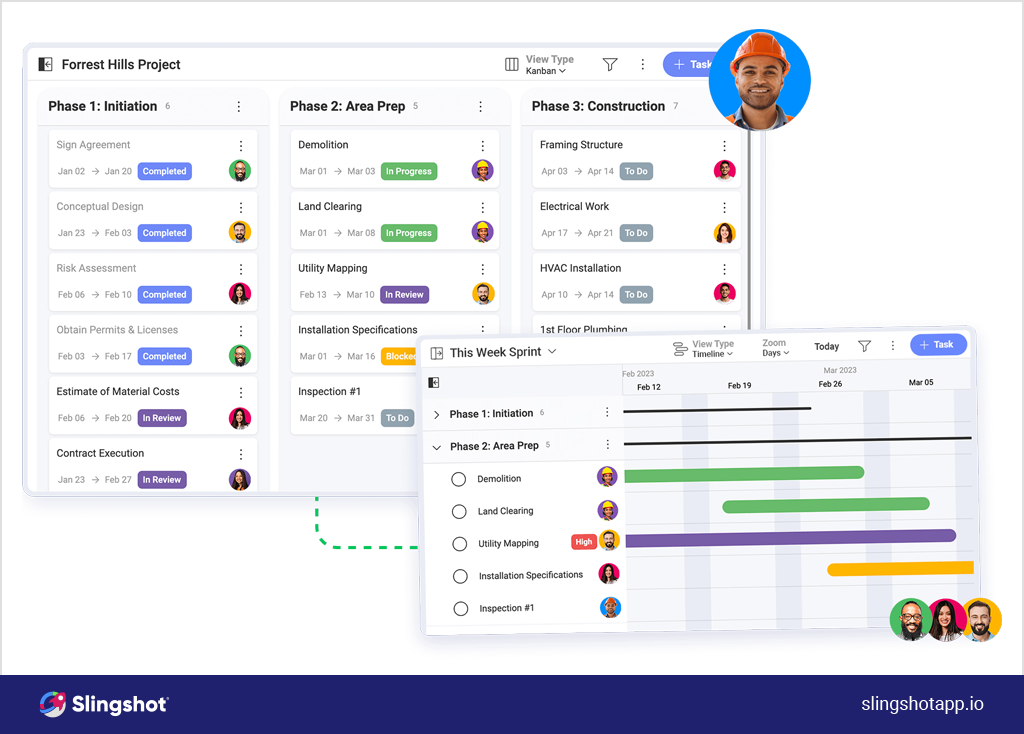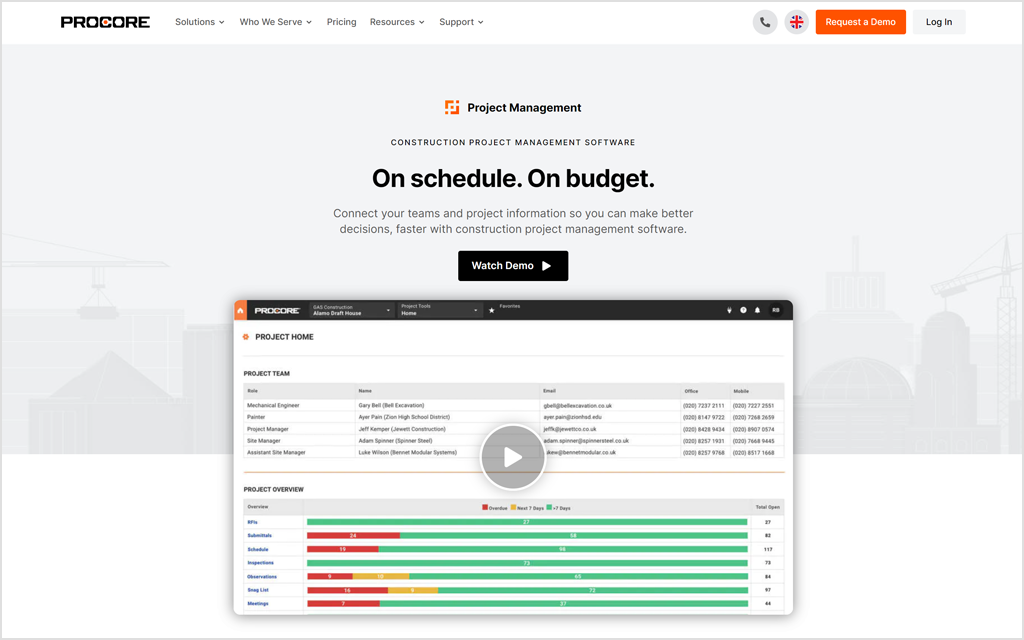Streamline Your Jobs With Advanced Building Monitoring Software Application
In the ever-evolving landscape of building management, the assimilation of advanced software solutions offers a substantial chance for organizations to boost task effectiveness and stakeholder communication. By systematizing details and automating routine tasks, these devices not only decrease errors but additionally equip groups to concentrate on calculated objectives - Management Software For Contractors. As we check out the crucial attributes and successful executions of such software application, it becomes clear that the future of task management is being reshaped-- yet, the concern remains: just how can your company harness these improvements to attain unequaled success?
Benefits of Building Monitoring Software Application
Leveraging construction administration software program substantially boosts project efficiency and interaction among stakeholders. This innovation simplifies workflows by streamlining information, which minimizes miscommunication and lowers the danger of mistakes. Enhanced collaboration tools allow real-time updates, ensuring all staff member are lined up on project objectives, timelines, and adjustments.
In addition, building monitoring software program gives comprehensive project tracking capabilities, permitting better resource allotment and budget plan administration. By automating routine tasks such as scheduling and reporting, teams can concentrate on more tactical activities, inevitably raising performance.
Furthermore, the software application commonly consists of robust analytics features that give important insights into task efficiency, assisting in decision-making processes. These insights can aid recognize prospective problems prior to they intensify, thus mitigating risks and improving overall task end results.
Furthermore, the accessibility of building administration software on numerous devices ensures that stakeholders can remain notified and engaged, no matter of their place. This level of availability not only cultivates accountability yet also encourages teams to react rapidly to obstacles, improving the general dexterity of the task. In summary, the application of building administration software yields significant advantages that drive effective task delivery and stakeholder contentment.
Secret Attributes to Look For
When selecting construction administration software, recognizing the necessary features is vital for optimizing task performance. Seek an user-friendly user interface that promotes easy navigation and quick access to essential devices. Robust project planning and organizing abilities are important, enabling groups to allocate sources effectively and handle timelines efficiently.
Partnership tools must be integrated to enhance communication among stakeholders, whether they are in the office or on-site. This includes real-time updates, document sharing, and messaging capabilities. In addition, think about software application that uses spending plan tracking and expense management includes to check expenses and ensure financial liability throughout the project lifecycle.
Mobile accessibility is increasingly vital, allowing employee to access information and update project standings from any place. Additionally, personalized reporting abilities make it possible for supervisors to create customized insights for notified decision-making.
Lastly, make certain the software supports conformity and safety monitoring functions, as these are crucial in keeping industry requirements and mitigating dangers. By focusing on these essential attributes, building and construction professionals can select software application that not only simplifies task management yet likewise significantly enhances total efficiency and success.
Implementing Software in Your Process
Effectively integrating building and construction management software program into your workflow can significantly boost operational efficiency. The very first step entails a detailed evaluation of your existing procedures to determine locations where software application can simplify operations. Involve key stakeholders in this evaluation to make certain that the software chosen aligns useful content with your organizational demands.
As soon as the proper software application is selected, spend time in extensive training for your team. This will not just reduce resistance to transform however likewise make best use of the potential advantages of the software program. A phased application method is usually helpful, allowing teams to adjust gradually while lessening interruption to recurring tasks.
It is critical to establish clear communication networks during the implementation stage. Routine updates and comments sessions can assist deal with any kind of challenges that occur, fostering a joint environment. Furthermore, think about integrating the software with existing tools to create a smooth modern technology environment, improving data sharing and task monitoring.
Lastly, continually keep track of the software's efficiency and its effect on workflow performance. This continuous evaluation will enable prompt modifications and renovations, making sure that the software application proceeds to fulfill progressing task demands and visit contributes positively to your operational objectives.
Study of Effective Fostering
Real-world examples of building monitoring software application fostering highlight the substantial advantages these devices can offer to organizations. One noteworthy case is a mid-sized basic service provider that implemented an extensive building and construction administration platform to improve project workflows.
Another example comes from a large facilities task, where a leading building and construction firm used software application to boost task monitoring and budgeting. The company reported a 40% enhancement in budget accuracy and a significant decrease in adjustment orders, inevitably conserving the business over $1 million (Software For Construction Project Management). The software's real-time coverage capacities allowed stakeholders to make educated decisions and reduce dangers properly
These study demonstrate that the tactical implementation of building and construction management software application not only optimizes procedures however likewise improves economic performance. blog Organizations that welcome these modern technologies can place themselves for growth and flexibility in an open market, showcasing the importance of innovative remedies in the building market.
Future Trends in Building Management

In addition, the adoption of Structure Details Modeling (BIM) is readied to transform cooperation among stakeholders by supplying a comprehensive electronic representation of functional and physical qualities of jobs. This standard shift fosters enhanced interaction and reduces mistakes, ultimately causing set you back savings and time performance.
Additionally, the rise of mobile innovation is making it possible for real-time data gain access to and interaction, allowing task managers to check progress on-site and make informed decisions without delay. The Internet of Things (IoT) is also acquiring grip, with clever sensing units giving indispensable data on devices use and website problems, improving security and operational performance.

Verdict
In verdict, progressed construction monitoring software application dramatically improves project performance and interaction among stakeholders. By systematizing information and automating routine jobs, such software program reduces errors and miscommunication, facilitating efficient project tracking and resource appropriation.
In the ever-evolving landscape of building monitoring, the combination of innovative software options presents a considerable possibility for organizations to enhance job performance and stakeholder communication.Leveraging building monitoring software program significantly boosts job performance and interaction amongst stakeholders. In summary, the application of building and construction management software yields considerable benefits that drive effective job distribution and stakeholder contentment.
Another example comes from a large facilities project, where a leading building and construction company made use of software program to boost project monitoring and budgeting.In verdict, progressed building and construction administration software program significantly enhances project efficiency and communication among stakeholders.
Comments on “Why Construction Job Management Software Is Necessary for Project Success”